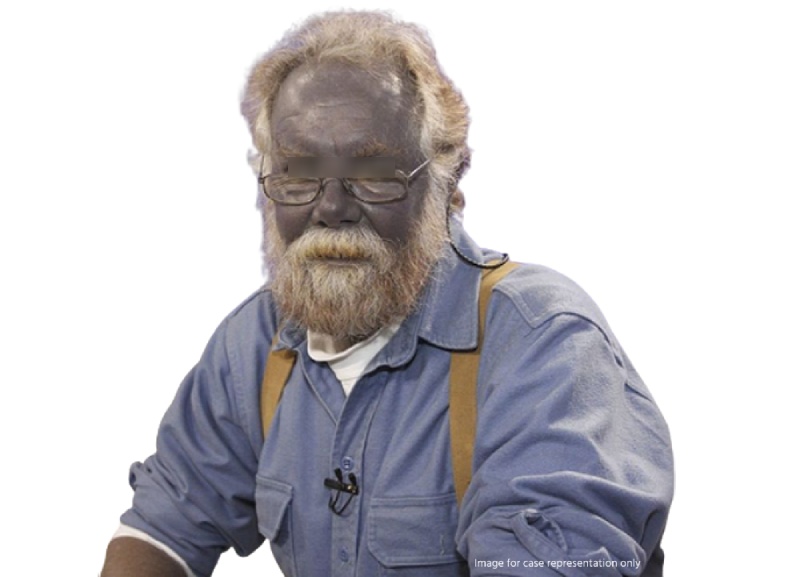
The Fugates, a family who lived in the hills of Kentucky, commonly known as the “Blue Fugates” or the “Blue People of Kentucky”, are notable for having been carriers of a genetic trait that led to methemoglobinemia, which causes the appearance of blue-tinged skin.
Martin Fugate and Elizabeth Smith who had married and settled near Hazard, Kentucky, around 1820, were both carriers of the recessive methemoglobinemia (met-H) gene. As a result, four of their seven children exhibited blue skin, and continued progenation within the very limited local gene pool ensured that many descendants of the Fugates were born with met-H.
A hematologist Madison Cawein treated the family with methylene blue, which eased their symptoms and reduced the blue coloring of their skin.
Reason: The underlying mechanism involves some of the iron in hemoglobin is converted from the ferrous [Fe2+] to the ferric [Fe3+] form.
Signs and symptoms: (methemoglobin level above 10%) include shortness of breath, cyanosis, mental status changes (~50%), headache, fatigue, exercise intolerance, dizziness, and loss of consciousness. People with severe methemoglobinemia (methemoglobin level above 50%) may exhibit seizures, coma, and death (level above 70%).
Causes:
- Genetic: Due to a deficiency of the enzyme diaphorase I (cytochrome b5 reductase), Hereditary met-Hb, HbM, or HbH.
- Acquired: Drugs – trimethoprim, sulfonamides, and dapsone, local anesthetics especially articaine, benzocaine, prilocaine, lidocaine, and aniline dyes, metoclopramide, rasburicase, umbellulone, chlorates, bromates, and nitrites.
Differential diagnosis: Argyria, sulfhemoglobinemia, heart failure
Treatment: Supplemental oxygen and methylene blue given as a 1% solution (10 mg/ml) 1 to 2 mg/kg administered IV slowly over five minutes.